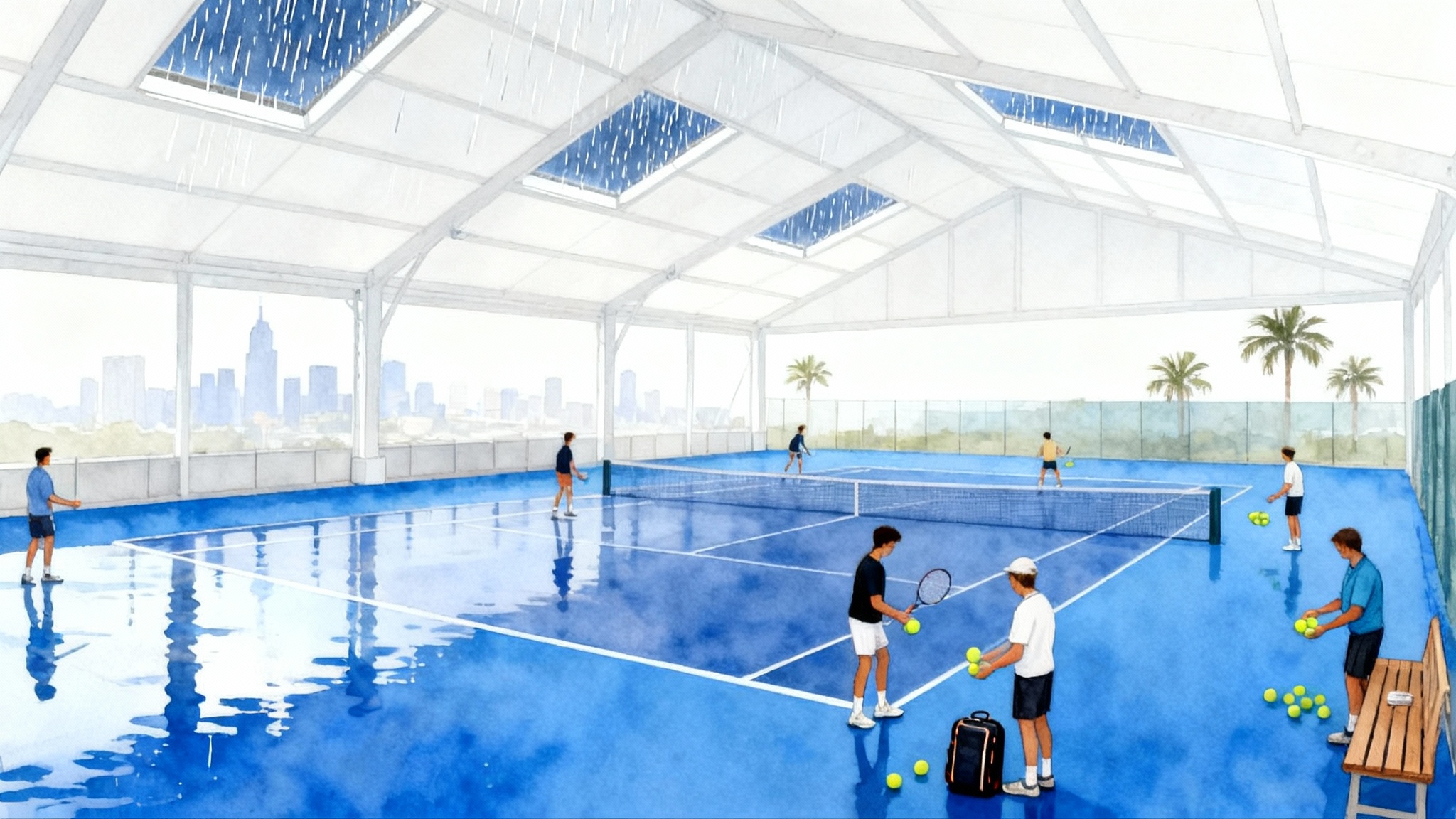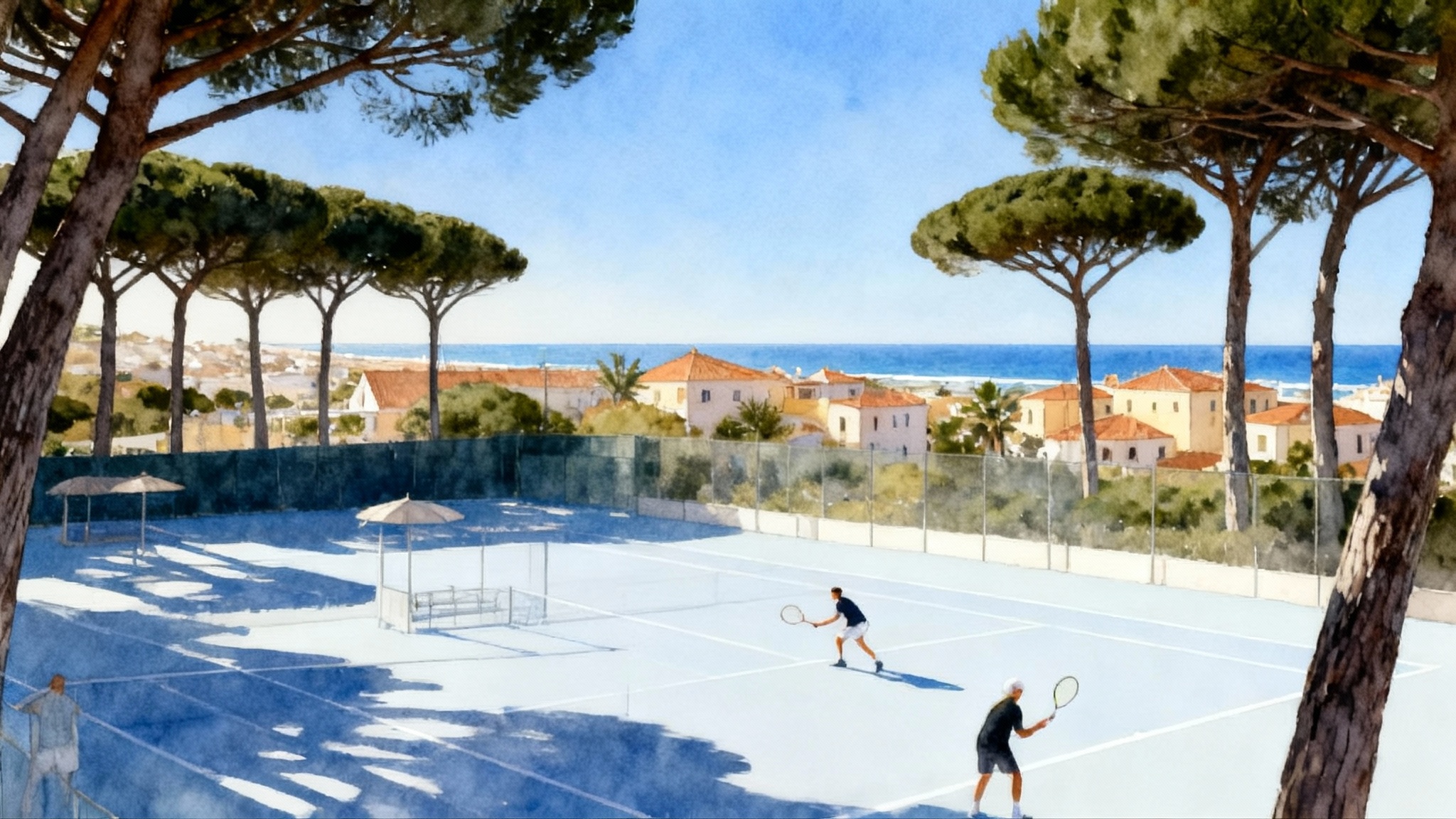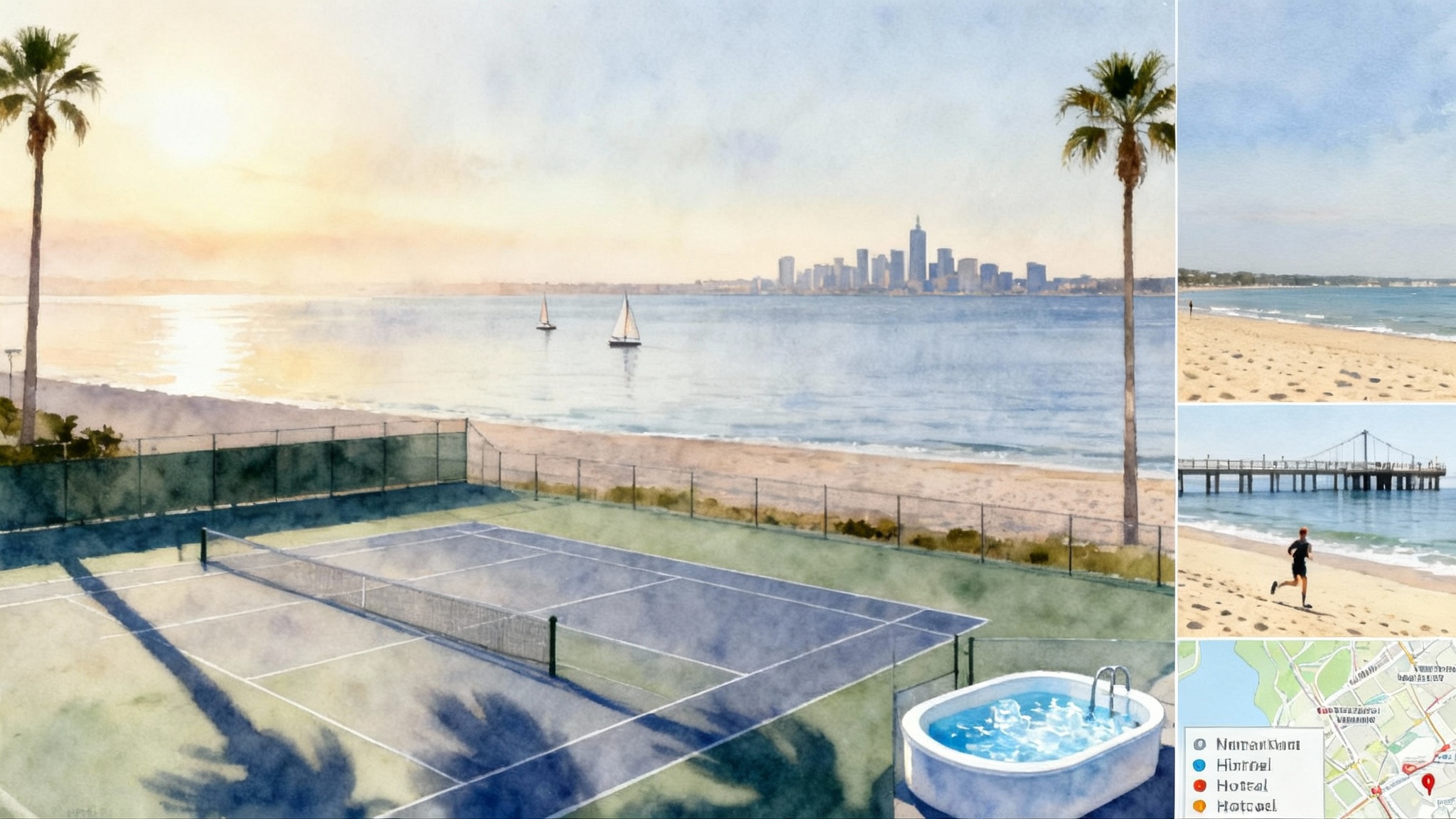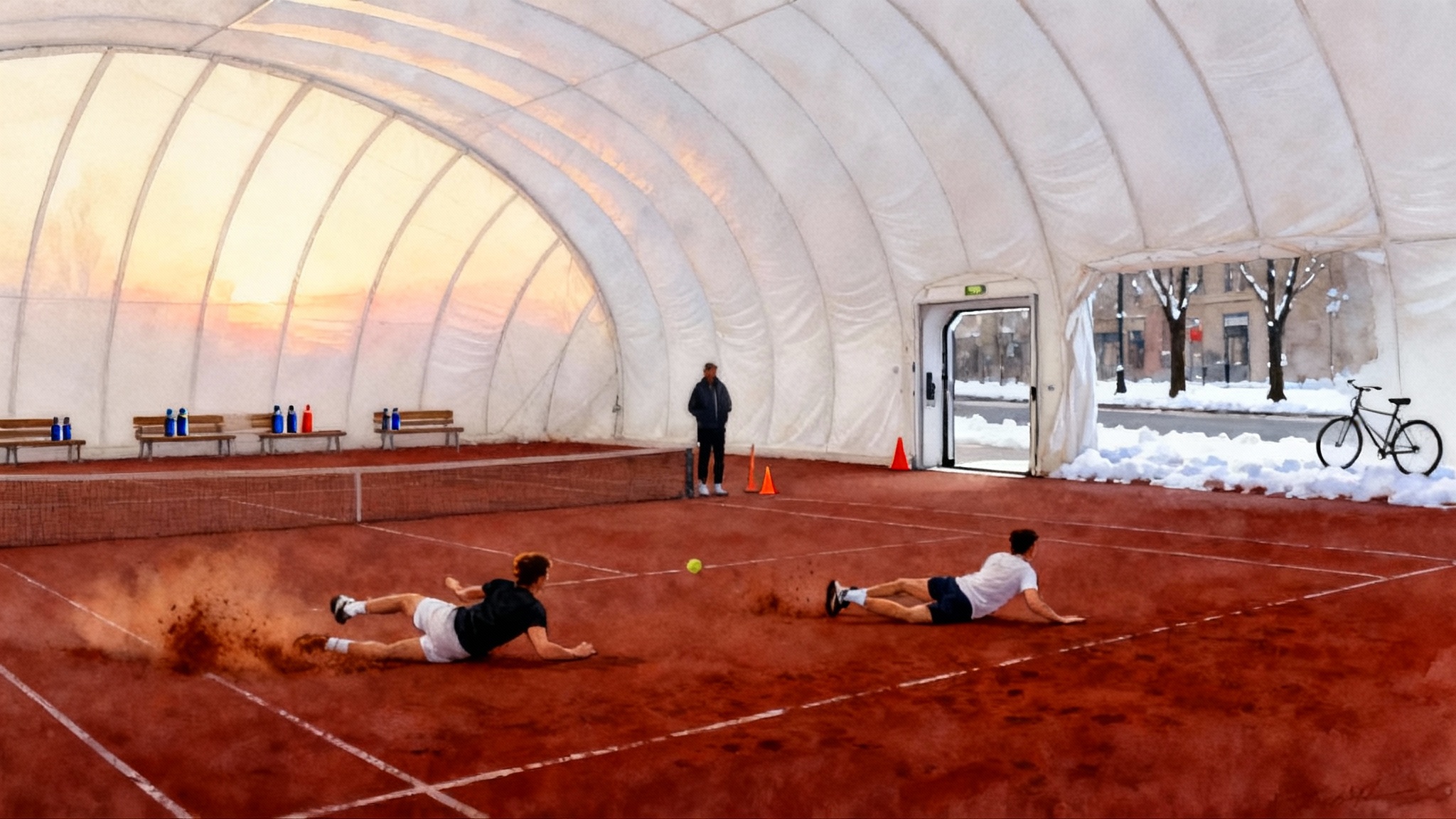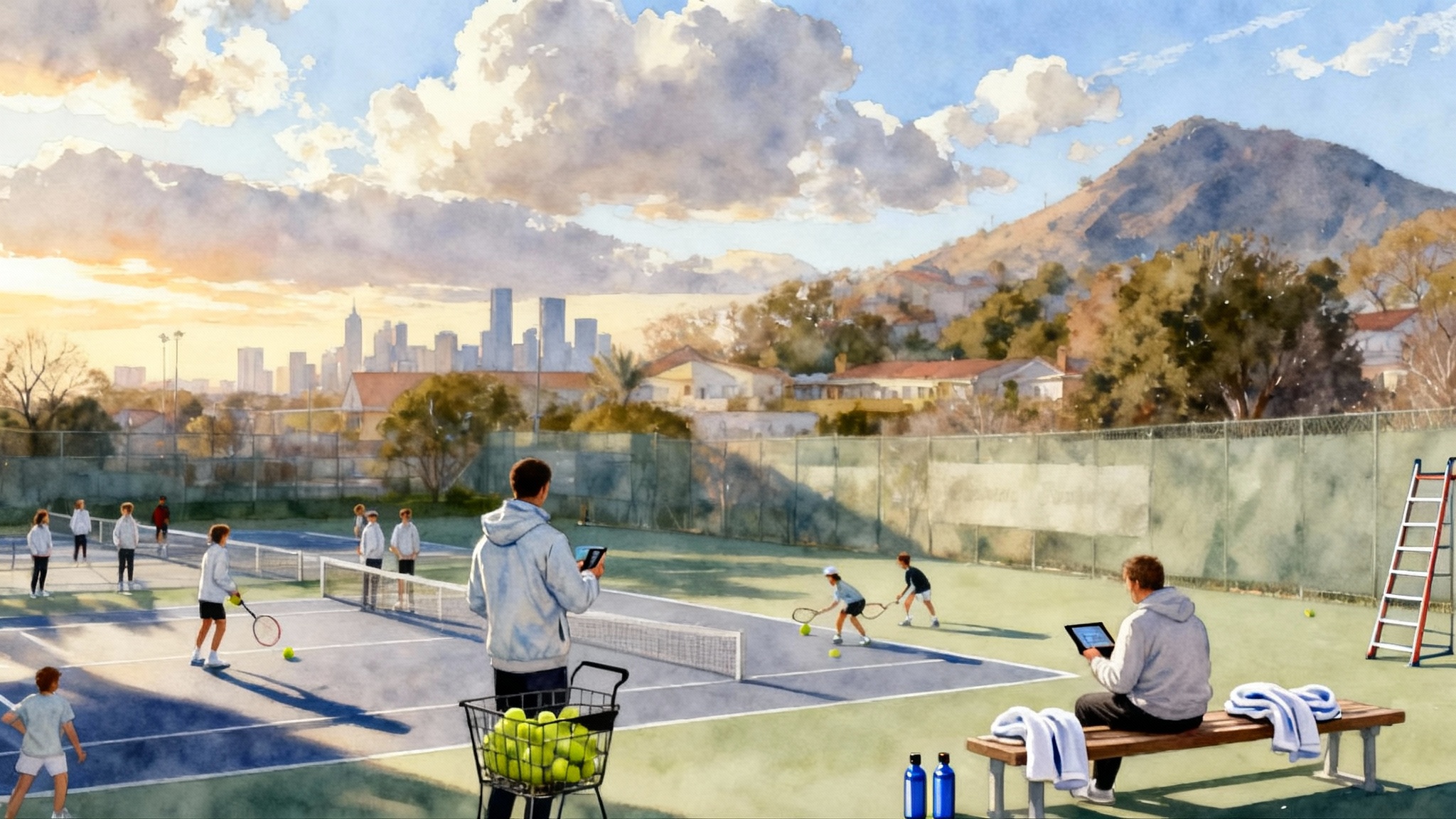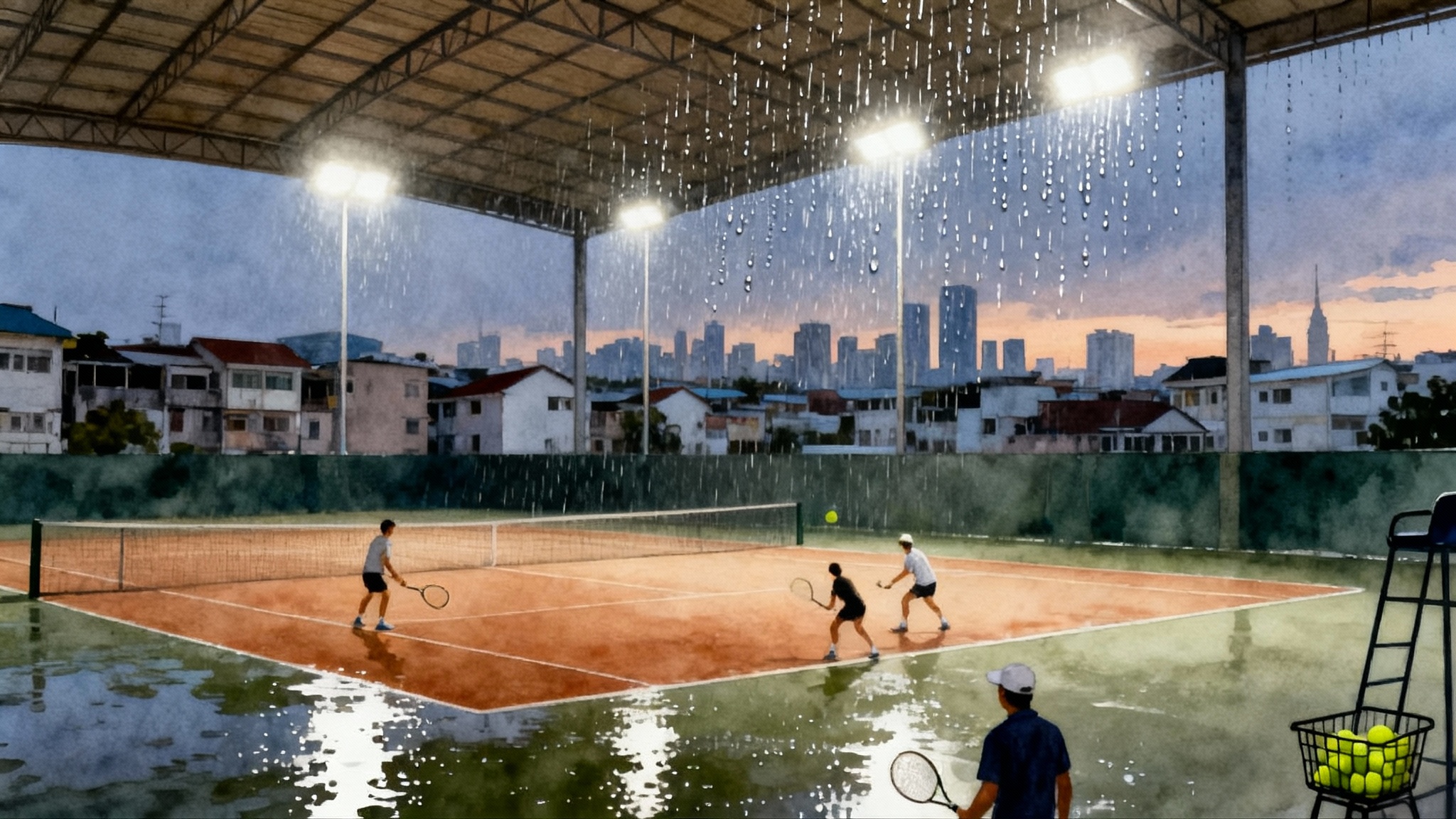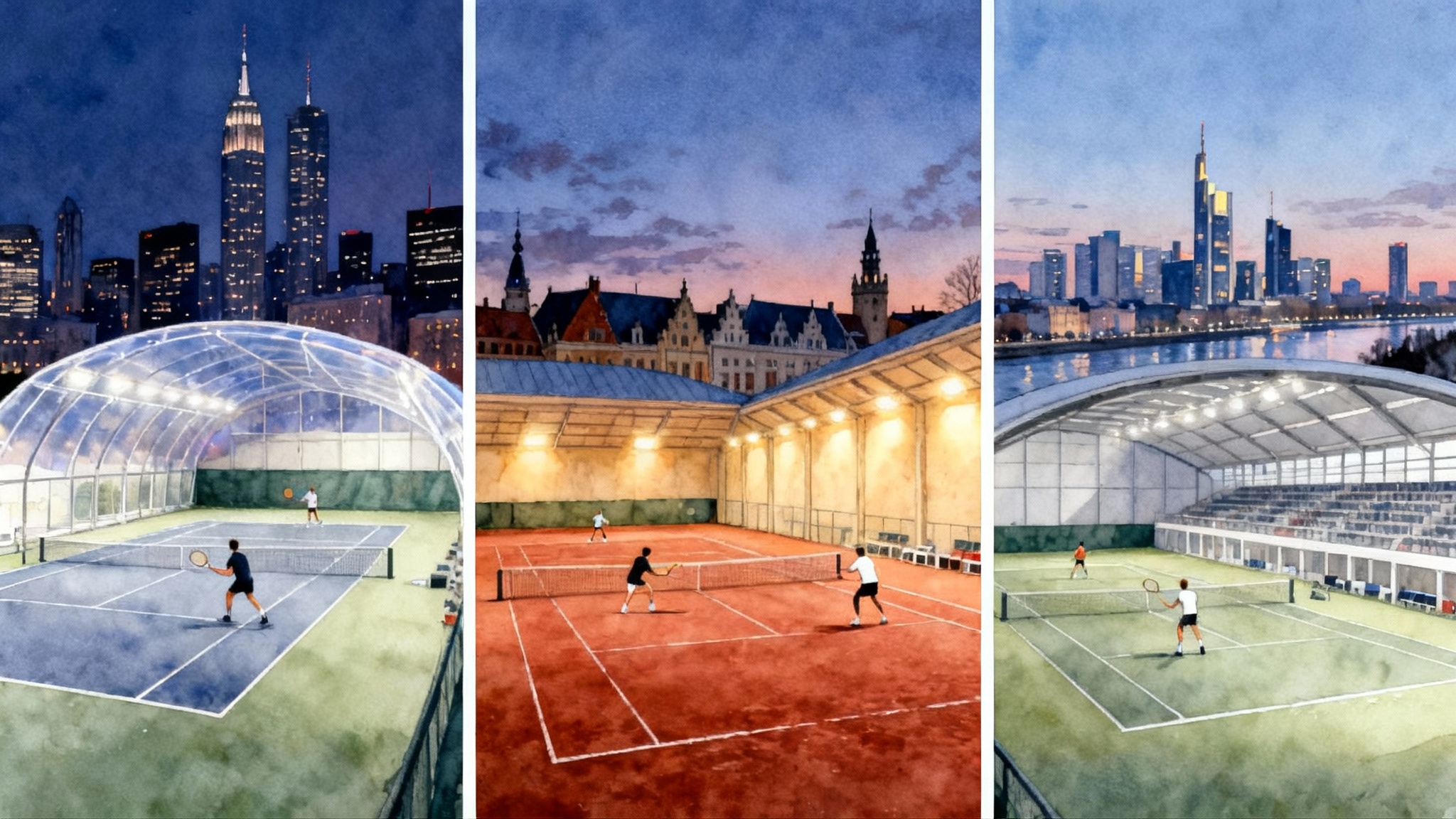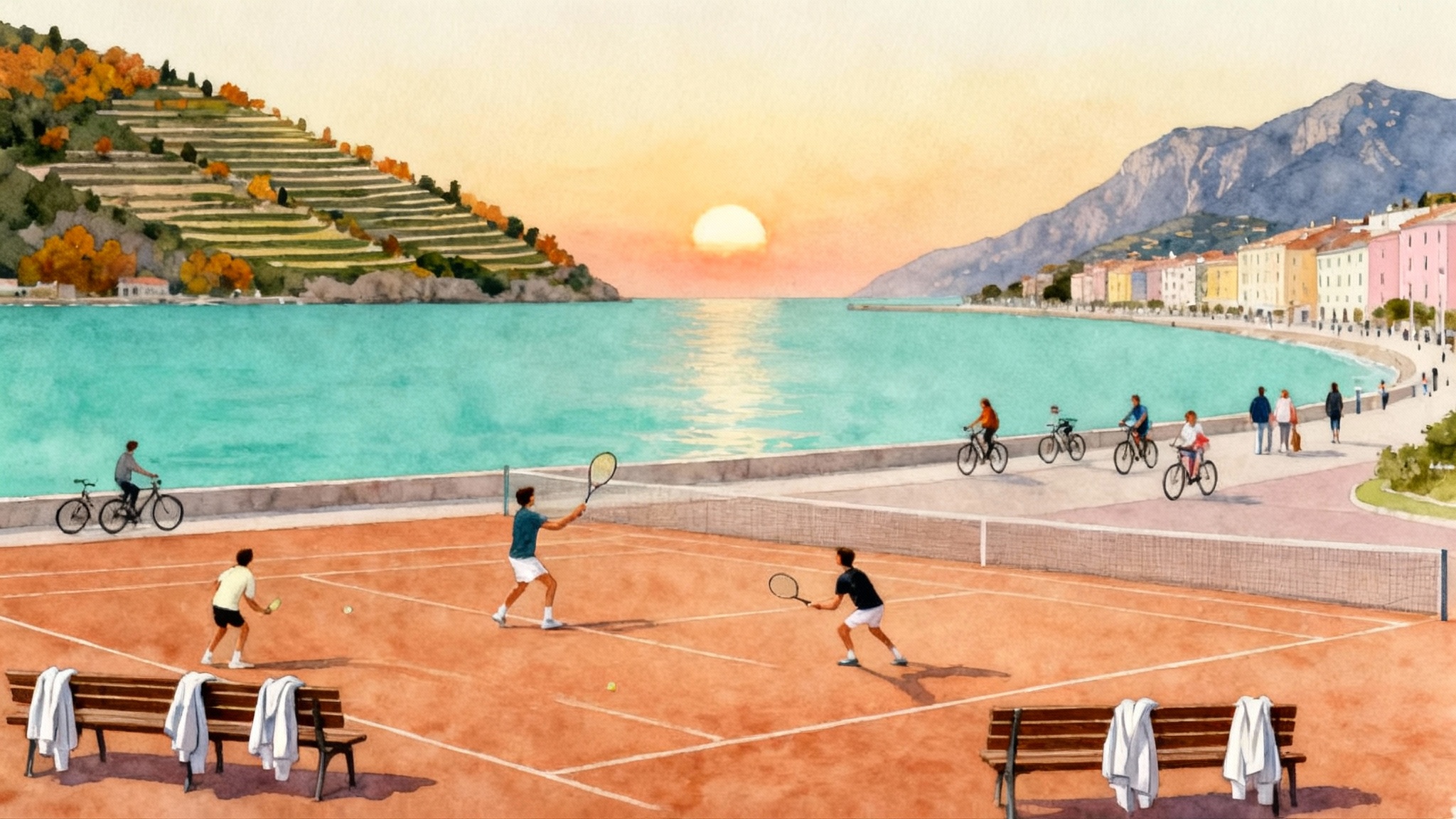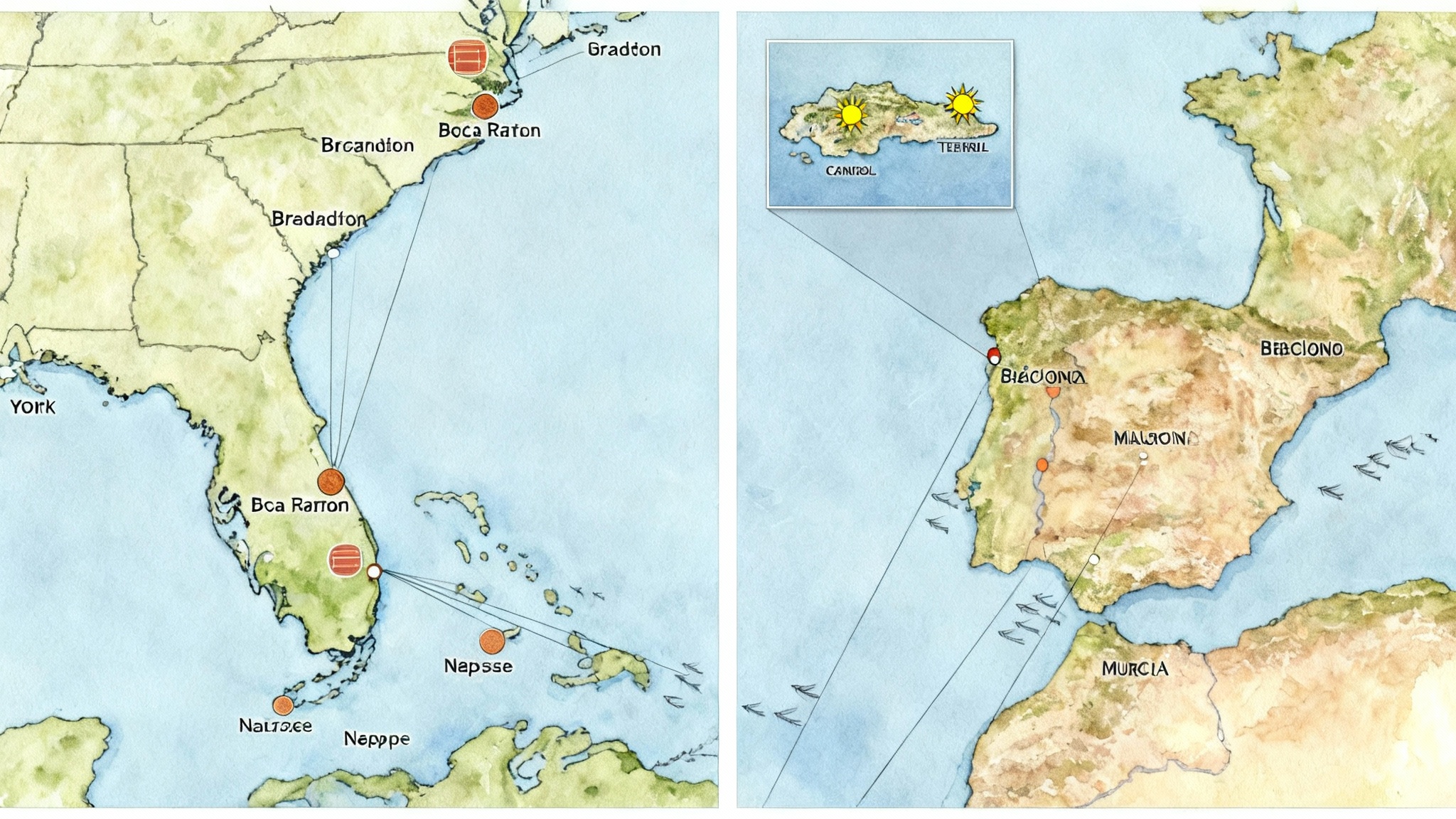Sardinia Tennis May–October at Forte Village’s HEAD Academy
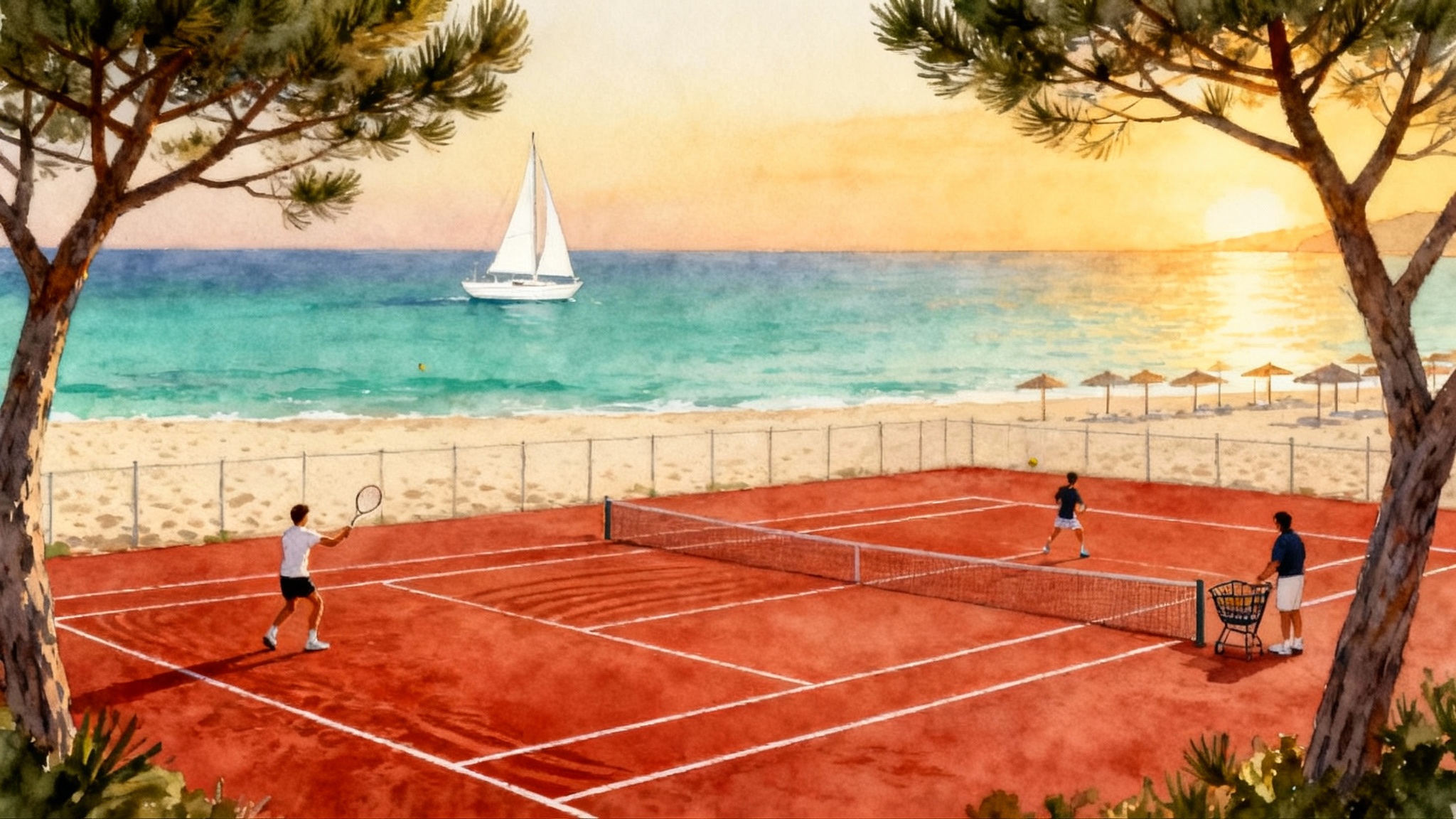
Why Sardinia from May to October works for tennis
If you have ever lost a summer training block to rain or scorching heat, Sardinia feels like cheating the calendar. The island sits in the middle of the Mediterranean, which steadies spring and autumn temperatures, trims rainfall, and invites a daily sea breeze that keeps clay courts honest. In Cagliari, the closest major city to Forte Village, daytime highs in May often sit in the low to mid 70s Fahrenheit and late September through October stays mild. Rainfall is lower than many nearby coasts, especially in early summer and again after the peak holiday season. For a sense of the pattern, see the long-term Cagliari climate averages. One practical result: more playable hours on clay, without chasing shade or fighting frequent thunderstorms.
The breeze matters. Sardinia’s prevailing winds move heat off court, yet they are not the kind of gusts that wreck ball tosses. On clay, where rallies stretch longer, that extra comfort saves legs and opens up double sessions even for juniors. Pair that with the island’s abundance of red clay and you have a training canvas that rewards patience and footwork.
The venue: Tennis Star Academy by HEAD at Forte Village
Forte Village sits on the south coast near Santa Margherita di Pula, about 45 to 50 minutes from Cagliari Elmas Airport by car. Within the resort, Tennis Star Academy by HEAD is the training hub, with a cluster of red clay courts and a smaller number of hard courts for variety. The setting is classic Mediterranean: macchia scrub and pine on one side, shimmering water on the other. Surfaces are kept in match-ready condition each morning, and the academy team drags and waters between blocks so afternoon sessions play true.
Coaching is modern and practical. Expect a clear theme per session, video check-ins for players who want them, and drill progression that moves from hand feeds to live ball to situational points. The academy is equipped with HEAD rackets and balls, with on-site stringing for players who break or adjust tension during the week. If you need loaner frames to test grip size or balance, ask at check-in.
- Group coaching ratios typically run 1 coach to 4 players for technical drill blocks. When the resort is busy, matchplay courts sometimes run 1 coach to 5 or 6, with rotation and targeted feedback between points.
- Private lessons are one-to-one or one-to-two for doubles teams.
- Junior red and orange ball groups use lower-compression balls and mini nets, keeping ratios tight for a high number of touches.
The program mixes weekly clinics, matchplay ladders, and guest-pro masterclasses during select dates. For reference on programming and seasonal offerings, the resort’s page is a good snapshot of what is on tap: the Forte Village tennis academy.
Ideal weeks by player type
Sardinia’s sweet spot runs longer than most people realize. Here is how to target your dates.
Juniors
- Late May to mid June: School is still in session for many Europeans, which keeps crowding modest. Weather is warm enough for early swims but cool enough for two training blocks per day without heat stress. This is ideal for under-12 and under-14 players building time on clay.
- First half of September: After the Italian holiday peak ends, courts open up again. The sea is still warm from summer. For juniors coming off hard-court seasons, this is a strong window to re-groove movement patterns on clay before fall tournaments.
- Early October: Mild and quiet. Great for technical rebuilds, serve work, and fitness tests without battling heat.
Adults
- May and early June: Mix a morning technical block with afternoon matchplay, then finish at the beach or thalasso pools. You can train hard and still make dinner feeling fresh.
- Mid to late September: Fewer families, more court availability, and comfortable evenings on the terrace. If you are tuning up for autumn club leagues, target this window.
- October: Soft light, spacious courts, and long rallies that feel like practice rather than survival. If you prefer a calm resort vibe, this is your month.
Surface mix and how to use it
Forte Village is predominantly red clay, with a couple of hard courts available. Assume nine sessions out of ten will be on clay unless you specifically request otherwise. That is a feature, not a bug, for shoulder season training.
- Clay days: Build your week around footwork ladders, open-stance recovery steps, and depth control. Work forehand height and patterns that finish with the backhand down the line. Ask for cross-court neutral rallies to 15-ball targets before point play.
- Hard-court tune-ups: Drop in one afternoon on hard to check timing on flatter first serves and returns. Keep volume low to protect joints.
A good rhythm is clay for the main technical blocks and hard courts for brief calibration. If you are switching from hard courts at home, plan one acclimation day to relearn sliding and spacing.
A sample day that balances gains and the beach
Here is a template that many players follow. Adjust by age, heat, and match load.
- 7:30 Breakfast: Whole grains, fruit, eggs, water, and a small espresso if that is your habit. Pack two bottles and a banana.
- 8:30 to 10:30 Morning technical: Dynamic warm-up, footwork ladders, hand feeds to rhythm, then live-ball cross-court rallies. Finish with serve plus one patterns and a 10-point tiebreak.
- 10:30 to 11:00 Cooldown: Stretch and hydrate. Quick video review if booked.
- 11:30 to 13:00 Sea and light lunch: Swim for 10 minutes for active recovery. Salads, pasta, fish, and a lot of water. Keep it simple.
- 14:30 to 15:30 Strength and mobility: Bands, hips, single-leg work, and shoulder care. Keep the load moderate.
- 16:00 to 17:30 Matchplay block: Two short sets with coaching between games. Focus on using height and depth on clay.
- 18:00 Recovery: Sports massage or a thalasso circuit. If you choose the pools, alternate warm and cool for 60 to 90 seconds each and finish on cool.
- 20:00 Dinner: Carbs plus protein, vegetables, and one dessert if you like. Early bedtime on double-session days.
Juniors should shorten the afternoon set on warmer days and extend shaded skill games. Adults returning from layoff can swap the afternoon block for a guided hit of 45 minutes.
Recovery and beach add-ons
Training sticks when you recover well. Forte Village has a full-service spa with saltwater pools and sports therapy. After heavy footwork, schedule a leg flush and ankle mobility session. Add a 10-minute cold immersion if you have back-to-back matchplay days. For teams, book a group recovery slot right after the afternoon set to prevent drift.
On the beach side, a 20-minute paddleboard or a gentle swim can calm the nervous system without adding impact. Morning barefoot walks on firm sand help foot strength if you keep the pace light. If you plan a coastal hike, place it on your lightest tennis day and wear supportive shoes to protect calves and Achilles tendons after clay sessions.
Cost bands and how to budget
Prices change by date and room category, and tennis offerings can vary with guest-pro schedules. Use these bands to frame your plan, then confirm with the resort when you book.
- Lodging at Forte Village in shoulder season: approximately 350 to 850 euros per room per night for the main hotels, higher for suites and villas. Breakfast is typically included in packages.
- Group clinics: about 60 to 110 euros per player per 60 to 90 minute session depending on ratio and season.
- Private lessons: about 100 to 170 euros per 60 minutes. Two-player shared lessons usually add 20 to 30 percent to cover the second player.
- Weekly junior programs: roughly 350 to 600 euros for multi-day packages, depending on hours and group size.
- Stringing: 20 to 30 euros per racket, plus the cost of strings if you do not bring your own.
- Airport transfers: 90 to 150 euros each way for a private car, lower if you share a shuttle. Car hire varies widely, but shoulder-season compact cars often run 40 to 70 euros per day plus fuel.
Sample seven-night budget for two adults training four days each in late September:
- Hotel: 2,800 to 4,900 euros
- Tennis: 2 group clinics per person on four days, plus one private together: 900 to 1,400 euros
- Transfers or car hire, stringing, and incidentals: 300 to 600 euros
- Total estimate: 4,000 to 6,900 euros excluding flights
For one junior and one parent in early June with four clinic days and two private lessons:
- Hotel: 2,100 to 3,200 euros
- Tennis: 500 to 900 euros
- Transfers and extras: 250 to 400 euros
- Total estimate: 2,850 to 4,500 euros excluding flights
To manage costs, target early June or late September, favor group clinics for volume, and book one private at the start and one midweek for course correction. For broader seasonal planning, see our Winter 2025 tennis training map.
Getting there: Cagliari flight logistics simplified
Your airport is Cagliari Elmas, code CAG. From the United States, you will connect once or twice. Typical routings go through Rome, Milan, Frankfurt, Munich, Paris, London, or Barcelona. Summer adds more direct options from European hubs into Cagliari, which helps with shorter total travel times in May, June, September, and parts of October.
Practical tips for flights and arrival:
- Connection strategy: When buying separate tickets across the Atlantic and into Sardinia, build at least two and a half hours for the connection. If you are on a single ticket, 90 minutes may be enough, but longer is safer during summer.
- Racket baggage: Most airlines count a racket bag as a standard checked bag if it fits within length limits. If you travel with many frames, use a wheeled case to keep weight within limit and bring one backup frame in carry-on.
- Arrival and transfer: The drive from Cagliari Elmas Airport to Forte Village takes 45 to 50 minutes on the coastal road. Pre-book a transfer with the resort or choose a rental car if you plan to explore beaches west of Pula. If you land in the late afternoon, consider a light hit only, then start full training the next morning.
- Fuel and tolls: There are no motorway tolls on this route. Fuel stations are plentiful near the airport and along the main road.
Sardinia vs Mallorca vs the French Riviera
All three regions are beautiful and offer tennis. The shoulder-season details matter if you want reliable training days and playable conditions on clay.
- Climate steadiness: Sardinia benefits from the maritime buffer and low late-summer rainfall around Cagliari. Mallorca can run more humid in September with occasional heavy showers. The French Riviera enjoys mild temperatures but sees a bump in autumn rain and more frequent frontal systems that can wash out an afternoon. The practical takeaway is simple: Sardinia gives you a higher probability of two dry sessions per day in May and again in late September to October. For a regional comparison nearby, read our October to November training on the Rivieras.
- Sea-breeze cooling: On open clay banks near the water, Sardinia’s breeze often makes midday practice realistic in June and late September. In sheltered inland clubs on Mallorca or the Riviera, midday can feel stagnant, which pushes all training to the morning and evening squeeze.
- Clay abundance and quality: Sardinia’s resort and club courts lean heavily to red clay, with well-drained bases that tolerate a quick shower. The French Riviera has good clay as well, but court access near town centers can be tight in early summer. Mallorca’s mix includes red clay and artificial grass, which is less useful for long rally training.
- Crowding and cost shape: Sardinia’s peak is August. Late May, early June, and late September are calmer, with easier court scheduling. The Riviera has a longer shoulder but a denser calendar of events and conventions. Mallorca’s popularity with cycling, tennis, and golf can tighten availability around school holidays.
If your goal is the most playable hours on clay with a consistent breeze and a short walk to the sea, Sardinia edges the others in shoulder season.
How to book smart
- Start with dates, not room type. Pick two possible weeks and ask the academy which one has stronger group composition for your level. Balanced groups make more difference than a better view.
- Lock ratios. When you reserve group clinics, request a 1-to-4 ratio for technical sessions and ask how matchplay courts are staffed. If a busier week is likely, plan one extra private to guarantee personalized work.
- Schedule the heavy days early. Your best adaptation comes in the first three training days. Place your longer morning blocks on days one and two, then sharpen with shorter, targeted hits before departure.
- Plan recovery. Pre-book one sports massage and one thalasso circuit and tie them to your heaviest days. Do not leave recovery to chance after a long rally day on clay.
- Bring clay-specific gear. Clay shoes with herringbone tread, a hat that does not fly off in a breeze, and two spare towels. Put damp-proof grips in your bag. Pack two strings you trust, cut one two pounds looser than your hard-court setup to add dwell time.
- Confirm court type in advance. If you need a hard-court calibration, request it when booking so the team can hold one for your afternoon slot.
The takeaway
Sardinia gives you the right kind of tennis weather for much of May to October, a sea breeze that makes sessions feel lighter, and a deep bench of red clay. At Tennis Star Academy by HEAD you can build a week that actually runs to plan: morning mechanics, afternoon matchplay, a swim and a recovery circuit, then dinner without the sense that you survived the sun. Choose your week by crowd pattern and age group, hold your group ratio, and budget for one or two key privates. Do that, and you leave with more than a tan. You leave with a forehand that lives higher over the net, legs that move smarter on clay, and the confidence that next season’s ladder will feel a notch slower than it really is.
